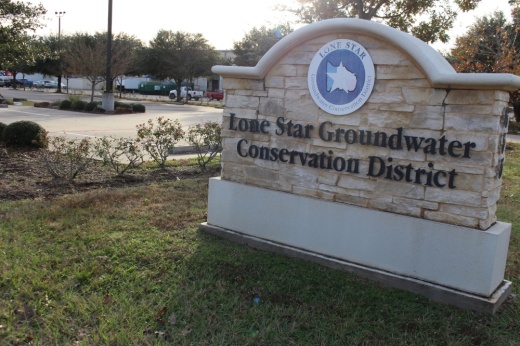Houston-area water leaders discussed subsidence, or ground sinkage due to groundwater pumping, in Montgomery County as well as policy relating to subsidence at a July 20 forum.
The forum was hosted by The Woodlands Area Chamber of Commerce and moderated by Woodlands Online editor Sean Thompson. Panelists included Jim Spigener, president and Montgomery County at-large representative of the board of the Lone Star Groundwater Conservation District; Jace Houston, general manager of the San Jacinto River Authority; Mike Turco, general manager of the Harris-Galveston Subsidence District; John Hall, president and CEO of the Houston Advanced Research Center; Simon Sequeira, CEO of the private water utility Quadvest; and Rick Moffatt, standing in for Jim Stinson of the Woodlands Water Agency.
Although the forum was intended to discuss issues such as storm drainage and municipal utility districts, subsidence took center stage, with panelists weighing in on the significance of the problem in Montgomery County and past policies. Spigener and Siqueira both discussed Lone Star’s 2017 shift from an appointed board to an elected board and the resulting shifts in policy
“Lone Star’s old board was basically forcing people into changing to surface water,” Spigener said. “We do acknowledge subsidence, but there also hasn’t been a decrease in pumping in The Woodlands in general.”
Prior to the shift in Lone Star's representation, the SJRA filed a 2016 lawsuit regarding payment of water fees against several Montgomery County cities including Conroe that made it to the Supreme Court, Community Impact Newspaper previously reported.
The Supreme Court ruled in 2020 that SJRA’s groundwater reduction plan contracts charging those fees were “valid and incontestable” but remanded both SJRA and the cities to a trial court to resolve disputes over the fee amounts
In April 2022, a Beaumont appeals court ruled in a separate case that the SJRA had failed to properly mediate with the cities of Conroe and Magnolia when attempting to collect its payments. Conroe Mayor Jody Czajkoski would later praise the decision as “a monumental victory for water users.”
Houston pushed back on what he described as “false statements,” such as an assertion that Harris County’s groundwater pumping is responsible for subsidence in Montgomery County. He pointed out that the water table, or the water level of underground aquifers, began stabilizing after SJRA built its surface water treatment plant on Lake Conroe.
“As you’re having your subsidence problems, your water wells are failing,” Houston said. “You have to bring more wells online or bring more supplies, and punching more holes doesn’t solve anything.”
Data from the federal United States Geological Survey shows gradual fluctuations in the depth groundwater lies from the surface. A well named the city of Conroe’s Piezometer No. 3, which is located in the Evangeline aquifer, shows the depth of groundwater decreased from July 2017-19—meaning the water level was closer to the surface—and from July 2019-22, depth increased—meaning the water level grew further from the surface..
At a January meeting of GMA-14—which is composed of all groundwater and surface water districts in the Houston area—new desired future conditions for aquifers were set, which included for the first time a metric of subsidence. However, LSGCD led a push prior to the desired future condition's adoption that resulted in the metric being optional for groundwater control districts.
Despite federal data, both Hall and Spigener spoke about the need for additional monitoring services in Montgomery County, with Spigener highlighting Lone Star’s subsidence study, which is in Phase 3 of 4.
Thompson asked each of the panelists for their thoughts on current and increasing heat in the Houston area and how it could shape demand and policy. Hall said changing climates would impact water shortages and needed to be considered in the future.
“The bigger the problem gets, the more costly the solutions will be,” Hall said.





